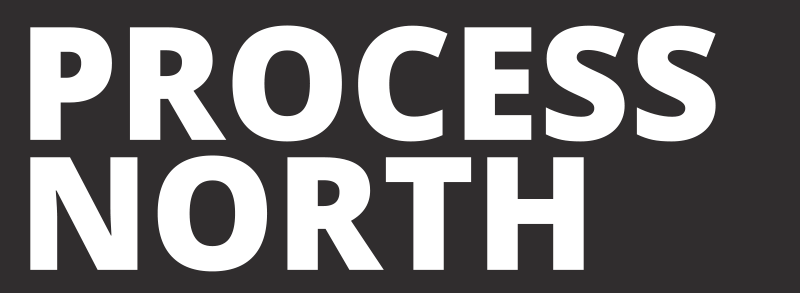Escaping the vortex?
Peter T Coleman, The Way Out: How to overcome toxic polarisation, Columbia University Press, New York, 2021, pp. xiv and 260.
Reviewed by Mike Makin-Waite
Even if they were all that this book offered, one or two of Peter T Coleman’s anecdotes would justify its purchase: the think-tank experts and diplomats who spent days at an academic conference politely listening to papers about how to address identity issues in conflict situations – but were rendered helpless when things ‘erupted’ in a closing session as one speaker objected to a comment made by another, judging it an attack on his integrity made on the grounds of his being Israeli; people on opposing sides of the ‘pro-life’ / ‘right to choose’ divide deciding to meet for regular dialogue sessions in the wake of murders carried out in Boston in 1994 by a man opposed to the provision of abortion; a tale of disharmony at the Detroit Symphony Orchestra, where a dispute between musicians and management ‘turned ugly’, with death threats and acts of violence.
Of course, the author offers much more than such stories. He is an experienced conflict resolution practitioner, a professor at Columbia University, and executive director of the Morton Deutsch International Center for Cooperation and Conflict Resolution. In The Way Out, Coleman incorporates vivid descriptions of situations including those sketched above into a systematic presentation of his understanding of how intractable conflicts and social polarisation can develop – and of how to take steps to overcome these problems.
His arguments are driven by evident personal commitment to help find ways forward from the deep divisions in the political and social life of the USA which help explain the Trump presidency (2016-2020) and which were exacerbated by it. Like many millions of Americans, Coleman feels ‘deeply shaken’ and ‘destabilised’ by recent experiences.
He notes that ‘83 percent of Americans find the future of the country to be a “significant source of stress”’. He is worried that, in the run up to the 2020 presidential elections, ‘22 percent of Democrats and 21 percent of Republicans said that partisan violence could be justified’ if things did not go as they thought proper.
Multiple expressions of ‘toxic polarisation’ now shape a political culture in which ‘many of us are feeling much colder toward, and more fearful and contemptuous of, those on the other side of our political divide … Democrats and Republicans imagine that almost twice as many people on the other side of the political fence hold more extreme views than they really do’.
Coleman does not simplistically blame these problems on Trump: ‘our current heated divisions … are largely a symptom of a decades-long trend in our society that goes back to at least the late 1960s … our current political crisis grew from the soil of our widening geographical and cultural divisions’.
On the basis that ‘we all need a break from our mass national psychotic break’, Coleman asks ‘what can we do to escape the grip of partisan contempt in our divided society and get back to solving our most pressing problems?’
Good practice, clearly stated and freely shared
The great value of Coleman’s book consists in setting out positive approaches that can be pursued where disputes on political issues relate to people’s differing values and priorities, and where our emotional impulses prevent effective engagement with other people: for this reason, the book should be widely read and used by conflict resolution practitioners.
He provides a useful definition of ‘dialogue’: the term should not be used to describe forms of ‘debate or criticism or other forms of oppositional confrontation, which are … closed communication processes of persuasion and influence aimed at winning a disagreement’. For Coleman, ‘dialogue is a process of open and reflective speaking, hearing, learning, and discovery that is unfamiliar to most of us … when in dialogue, participants often learn new information about themselves, the others involved, and the issues under discussion. It often involves a careful (or carefully facilitated) process in which the disputants share personal or otherwise meaningful stories about their own experiences regarding the issue in dispute’.
Coleman notes how apparently ‘stuck’ situations can sometimes generate aspects and moments which can be worked on so as to begin ‘to end divisive conflicts’: these include ‘instability; mutually hurting stalemate; mutually enticing opportunity’.
He considers ‘stories’ about ‘drivers of polarisation’, such as the view that humans are ‘highly emotional, esteem-thirsty, cognitive misers’, who ‘form group preferences quickly, and groups tend toward conformity and extremity’, and he shows how ‘differences in societal norms and structures matter, with hostilities accumulating over time’.
Coleman describes models based on ‘dynamical systems theory’ which he has developed with colleagues. These can help conflict resolution practitioners understand ‘attractors and repellers’ and ‘nonlinear complex systems’. He illustrates these with analogies, diagrams and charts. Resulting exercises for group work are freely available on a website linked to the book. Providing these helpful PDF worksheets is a great service to practitioners, who will get a good sense of Coleman’s craft by looking at these online materials – though it needs stressing that these complement rather than substitute for the book itself.
About a third of the way in, Coleman tells the reader that ‘grounded in the most robust findings from research on complexity science and change … the remainder of this book … describes what you, an exhausted human being stuck in a vortex of pain and polarisation, can do in your life and your community to find a way out. Put simply, we recommend that you take the time to reset, bolster and break, complicate, move, and adapt’.
On first reading The Way Out, I found myself reacting against such passages, in which Coleman risks adopting the tone of supposedly ‘inspirational’ management-speak and echoing the trite formulations of ‘self-help’ manuals. Working through the text again, though, I have changed my view. His neatly constructed arguments and alliterative lists actually express the author’s coherence and skills as a communicator. On reflection, I think my first reactions had to do with my prejudices about American presentational culture (which I regret and should overcome) and my allergy to the any hint of the phrases and tones habitually used by corporate managers (which I don’t regret).
‘Clean hands’
The remainder of this review describes aspects of the book which I still find unpersuasive (but which nevertheless add to its stimulating character). Though it provides much to draw from in my own efforts as a conflict resolution practitioner, there are also examples of some of the unhelpful evasions which are frequently encountered in this field of work.
One is about the value of ‘bipartisanship’. Coleman sometimes seems to over-value this, as if he is concerned about substantial differences of opinion as such, and not only when they become personal and hostile in tone, or lead towards violence.
At one point, he does accept that ‘political polarization is not necessarily a bad thing’. As he says, ‘some degree of ideological divergence has long been seen as a functional aspect of healthy, two-party system democracies’ and ‘research has shown that under certain conditions more polarized ideological differences can lead to higher-quality decision making in teams’.
Nevertheless, perhaps because of the bruising dynamics and degradation of US politics over recent years, Coleman is particularly focussed on the danger that sharp ‘political differences [can] become extreme, chronic … increasingly intolerant … toxic and pathological’.
One problem with over-valuing ‘bipartisanship’ and the benefits of co-operation between social and political actors who hold different positions and agendas (which might well reflect different relationships to power) is that it can tempt people to settle for ‘false peace’. This can mask the reality of ongoing substantial differences of interest and relations of oppression and exploitation. Premature ‘agreement’ may be helpful to buy time, but it only ‘holds’ the conflicted situation, which will still need addressing in future, and unresolved problems may have festered ‘under the surface’ by then.
Rather than being overly concerned to arrive at consensus, or a shared ‘bipartisan’ programme, an alternative model of conflict resolution work is to facilitate process which surfaces the full range of relevant issues, has them out fully, and brings social and inter-personal tensions to a head in a fruitful manner. This is about handling contention well over the long term, rather than stifling it with apparent but insubstantial concord. Practitioners should aim to do this in ways which avoid destructive violence, cultivating dialogue (as defined so well by Coleman), deliberative problem-solving, and the norms and crafts of democracy. This involves establishing and maintaining contexts for such processes so that they do not become struggles between enemies, but between adversaries who respect the legitimate right of their opponents to defend their position (an approach which the work of political theorist Chantal Mouffe points towards).
Another issue I have with The Way Out is that Coleman sometimes exaggerates the efficacy of particular individuals’ choices, crediting political leaders with impressive moral leadership for taking their followers on a peaceful path, but without acknowledging the role of systemic power structures and the extent to which it was these which determined and limited the political options which were available.
His passing comments on Costa Rica provide an example. Coleman states that ‘history shows us that the way out of many pathological states began with a reset. In 1948, the nation of Costa Rica emerged from the bloodiest civil war in its history, which had cost thousands of lives, to become one of the only nations in the world to intentionally decide to disband their military and redirect national resources toward education, health, and the environment’.
This ‘radical reset’ is credited to the ‘president, José Figueres Ferrer, the former leader of the armed revolutionaries, [who] chose to advocate for peacefulness. Today Costa Rica is ranked as one of the happiest and most peaceful nations on earth, and it has been referred to as “a model in terms of the development of a culture of peace”’.
Ferrer may well have made his various and successive choices with positive intent and the creditable desire to make use of, defend and widen the opportunities for social development in his country. But to attribute the settlement in Costa Rica to Ferrer’s choices is to simplify – and perhaps to do so to the point of being disingenuous. In a complex situation, Ferrer positioned himself as an opponent both of crudely pro-American figures and of the Costa Rican communists. Proposing social policies which would avoid the risk of popular backlash, at the same time as committing to suppress the Communist Party, Ferrer proved an appropriate candidate for support from the USA (the wider post-war relationship between the USA and Costa Rica defined in part by the latter sending a disproportionate number of operatives to ‘The School of the Americas’, which for many years fomented and facilitated military coups and murderous human rights abuses throughout Latin America).
Ferrer’s ‘triangulating’ stance was summarised in his 1951 comment to American interviewers: ‘your hands are not clean to fight communism when you don’t fight dictatorships’. This ‘challenge’ to the hegemon was in fact friendly advice on how to exercise hegemony more effectively. It was primarily the fact that the Costa Rican leader’s version of a ‘democratic’ outlook was not only acceptable but helpful to the USA in the context of the developing Cold War which allowed Ferrer’s politics to sustain, enabling him to serve three separate terms as president.
Review published February 2021.
The illustration is taken from the website of the Detroit Symphony Orchestra and shows musicians playing together / separately online during the Covid-19 pandemic.


